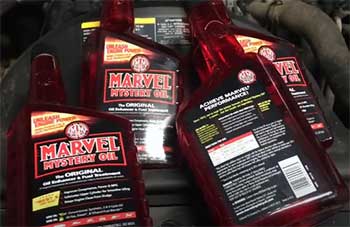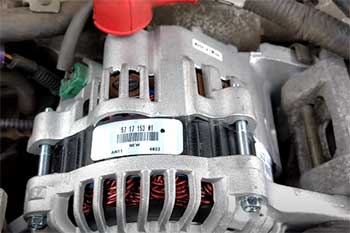I’ve been wrenching on cars for years, and I’ve tried just about every motor oil under the sun. But when I stumbled across STP Full Synthetic Oil, I knew I’d found something worth talking about.
This isn’t just another oil—it’s a game-changer for your engine’s performance and longevity. Whether you’re a daily commuter or a weekend gearhead, STP’s blend of science and reliability makes it a must-have.
Trust me, you’ll want to grab a jug of this stuff for your next oil change. Let’s get into why this oil has me hooked.
My Journey With STP Full Synthetic Oil
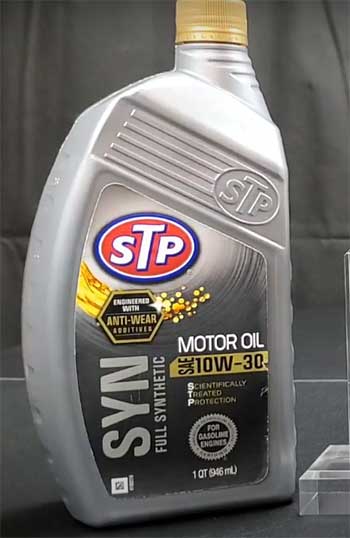
Picture this: it’s a crisp fall morning, and my trusty 2015 Honda Accord is due for an oil change.
I’d been using a well-known brand for years, but I was curious about STP Full Synthetic after hearing some buzz on automotive forums.
I’m no stranger to skepticism—new products often promise the moon but deliver a flicker.
Still, I decided to give it a shot. I picked up a 5-quart jug of STP 5W-30 Full Synthetic at my local AutoZone, and I was pleasantly surprised by the price.
It was noticeably cheaper than the premium brands I’d been loyal to.
Pouring the oil into my engine felt routine, but I noticed the clarity and consistency right away—it had that smooth, golden look you expect from a quality synthetic.
After tightening the new filter and firing up the engine, I let it idle for a bit.
The first thing that struck me was how quiet it was. My Accord’s 2.4-liter inline-four isn’t a noisy beast, but there’s usually a faint hum. With STP, it was like the engine was whispering. I chalked it up to placebo at first, but the smoothness held up over weeks of driving.
I put the oil through its paces: city stop-and-go traffic, highway cruises, and even a weekend road trip hauling camping gear. The engine stayed responsive, and I didn’t notice any of the sluggishness you sometimes get with lesser oils.
After about 3,000 miles, I checked the dipstick, and the oil was still remarkably clean—no murky sludge or burnt smell. By the time I hit 7,000 miles, I was sold. The oil held up beautifully, and my engine felt as spry as ever. That’s when I knew STP wasn’t just hype—it was the real deal.
What Makes STP Full Synthetic Stand Out?
STP Full Synthetic Oil isn’t just another product on the shelf; it’s a carefully crafted formula designed to keep your engine running like a dream. The folks at STP—short for Scientifically Treated Petroleum—have been in the game since 1954, and they’ve poured decades of expertise into this oil.
It’s engineered to reduce wear, fight corrosion, and keep your engine clean, all while meeting tough industry standards like ILSAC GF-5 and API SN. Available in grades like 5W-20, 5W-30, and 10W-30, it’s versatile enough for most vehicles, from compact sedans to light trucks.
What I love most is how STP balances performance with affordability. You’re getting a full synthetic oil that rivals the big names but doesn’t demand a premium price.
It’s formulated to handle extreme temperatures, so whether you’re stuck in sweltering summer traffic or starting your car in a frigid winter dawn, STP has your engine covered. Plus, it’s got additives that minimize sludge and deposits, which means your engine stays cleaner longer.
For someone like me who hates the thought of gunk clogging up my motor, that’s a huge win.
Pros of STP Full Synthetic Oil
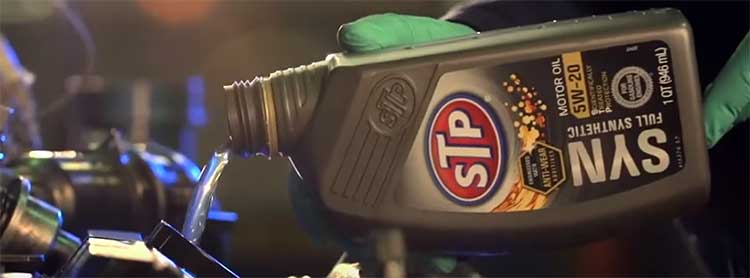
- Affordability Without Compromise
Let’s talk money. STP Full Synthetic is a steal compared to brands like Mobil 1 or Castrol Edge. I snagged a 5-quart jug for about $27 at AutoZone, while similar jugs from premium brands often run $35 or more. But don’t let the price fool you—this oil doesn’t skimp on quality.
It meets all the necessary certifications, so you’re not sacrificing performance for savings. For budget-conscious drivers who still want top-notch protection, STP is a no-brainer.
- Engine Cleanliness and Longevity
One of the standout features of STP is its ability to keep your engine spotless. The oil’s detergents and additives work overtime to prevent sludge and deposits. I’ve seen engines gunked up from cheaper oils, and it’s not pretty—think reduced efficiency and costly repairs.
With STP, my Accord’s engine stayed clean even after thousands of miles. That translates to better fuel economy and a longer-lasting motor, which is music to my ears.
- Versatility Across Conditions
Whether you’re driving in scorching heat or sub-zero cold, STM holds its own. Its thermal stability means it doesn’t break down under high temperatures, and it flows smoothly during cold starts.
I’ve driven my car in 95°F summer heat and 10°F winter chills, and STP never flinched. This versatility makes it a great choice for drivers in varied climates, so you don’t have to second-guess your oil choice.
- Smooth and Quiet Operation
I can’t overstate how much I appreciate the quiet ride STP delivers. My engine runs smoother and quieter than it did with other oils, and I’m not alone in noticing this.
Online reviews echo my experience, with users praising the reduced engine noise and improved responsiveness. It’s like giving your car a spa day—everything just feels better.
Cons of STP Full Synthetic Oil
- Not Ideal for Extended Drain Intervals
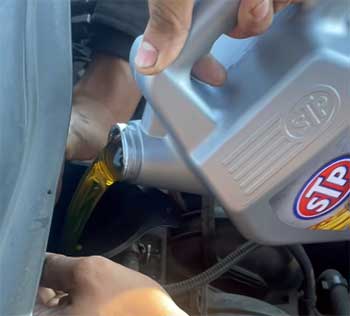
While STP is fantastic for standard oil change intervals—think 5,000 to 7,000 miles—it’s not the best choice if you’re pushing for 10,000 miles or more.
Premium oils like Mobil 1 Extended Performance are formulated for longer drains, and STP doesn’t quite match that endurance.
I noticed a slight darkening of the oil around 7,000 miles, which is fine for most drivers but a heads-up for those who like to stretch their oil changes.
- Limited Brand Prestige
Let’s be honest: STP doesn’t have the same cachet as Mobil 1 or Royal Purple. Some gearheads are brand snobs, and STP’s reputation as a “budget” oil can raise eyebrows. I get it—when you’re pouring something into your engine, you want a name that screams quality.
But after using STP, I can vouch that it performs beyond its price tag, even if it doesn’t have the same street cred.
- Regional Manufacturing Variability
Here’s a quirky downside: STP is made by Amalie Oil, but there’s chatter on forums about potential regional differences in formulation. Some users speculate that the oil might vary slightly depending on where it’s produced.
I haven’t noticed any issues myself, but it’s worth mentioning for those who like consistency across every jug.
Comparing STP To Other Brands
I’ve poured a lot of oils into my engines over the years, and I know you want to understand how STP Full Synthetic stacks up against the competition. So, let’s put it head-to-head with three heavyweights: Pennzoil Ultra Platinum, DuraMAX Full Synthetic Oil, and Mobil 1 Motor Oil.
I’m breaking this down A vs. B style to show you exactly where STP shines and where it might take a backseat. Buckle up, because we’re getting into the nitty-gritty of what makes each oil tick.
- STP Full Synthetic Vs. Pennzoil Ultra Platinum
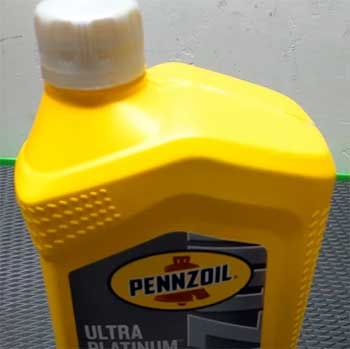
I’ve used Pennzoil Ultra Platinum in a friend’s Camry, and it’s a premium oil with a reputation for excellence.
Pennzoil boasts its “PurePlus” technology, which starts with natural gas to create a cleaner base oil.
The result?
An oil that’s fantastic at reducing engine wear and boosting fuel economy.
I noticed the Camry’s engine felt snappy, especially during highway merges, and the oil stayed clean for a solid 7,500 miles.
Pennzoil also claims better piston cleanliness, which is great for modern engines with direct injection.
But here’s where STP Full Synthetic holds its own. At about $27 for a 5-quart jug, STP is noticeably cheaper than Pennzoil’s $35-$40 price tag. In my Accord, STP delivered comparable smoothness and kept the engine spotless after 7,000 miles.
While Pennzoil might edge out slightly in high-tech engines or extreme performance scenarios, STP’s affordability and reliability make it a better pick for everyday drivers like you and me.
If you’re not chasing marginal gains in a sports car, STP gets you 90% of Pennzoil’s performance for a lot less cash.
- STP Full Synthetic Vs. DuraMAX Full Synthetic Oil
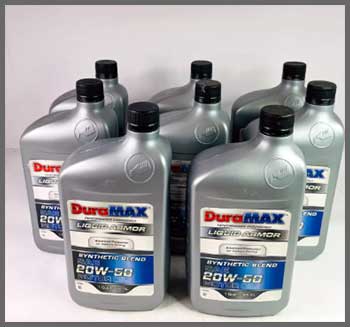
DuraMAX Full Synthetic Oil is a bit of an underdog, often found at O’Reilly Auto Parts and marketed as a workhorse for tough conditions.
I tried DuraMAX in a pickup truck I borrowed for a weekend move, and it handled the heavy loads and dusty backroads like a champ.
DuraMAX is formulated with robust additives to combat sludge and wear, making it a favorite for trucks and SUVs.
The truck’s V8 felt steady, and the oil held up well under stress, though I didn’t push it past 5,000 miles.
STP Full Synthetic, though, is my go-to for versatility.
It’s priced similarly to DuraMAX—around $25-$30 for 5 quarts—but I found STP smoother in my Accord’s smaller engine.
DuraMAX feels tailored for heavy-duty vehicles, with a focus on towing and high-torque applications, while STP’s broader compatibility suits everything from sedans to light trucks.
If you’re hauling trailers or driving a diesel, DuraMAX might have a slight edge. But for most of us, STP’s quieter operation and cleaner dipstick readings make it the smarter all-around choice.
- STP Full Synthetic Vs. Mobil 1 Motor Oil
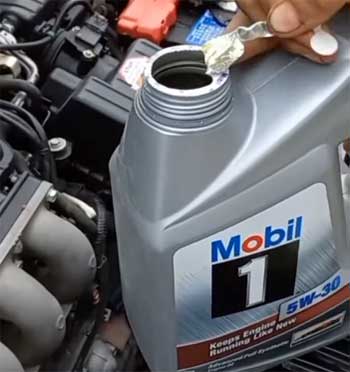
Mobil 1 is the king of synthetic oils, and I’ve used it in my Accord before switching to STP.
It’s a beast, with an advanced additive package that excels in extreme heat, cold, and high-performance engines.
Mobil 1’s Extended Performance blend can go 10,000 miles or more, and I remember being impressed by how clean it stayed in my car after a long road trip.
It’s also a favorite for turbocharged engines, offering top-tier wear protection.
STP Full Synthetic, priced at $27 versus Mobil 1’s $35-$40, is the budget-friendly contender.
In my experience, STP matched Mobil 1’s smoothness and engine cleanliness up to 7,000 miles, but it’s not built for those ultra-long drain intervals.
Mobil 1’s premium formulation gives it an edge for enthusiasts or luxury vehicles, but STP delivers nearly the same daily driving experience. For you, choosing STP means saving money without sacrificing the essentials—quiet operation, clean internals, and solid protection.
Unless you’re pushing your engine to the limit, STP is more than up to the task.
Tips For Using STP Full Synthetic Oil
- Stick to Regular Oil Change Intervals
To get the most out of STP Full Synthetic, change your oil every 5,000 to 7,000 miles, depending on your driving habits. If you’re doing a lot of stop-and-go city driving or towing, lean toward the lower end.
I check my owner’s manual for my Accord’s recommended interval and adjust based on how hard I’m pushing the car. Regular changes keep the oil’s additives active and prevent sludge buildup, ensuring your engine stays happy.
- Pair with a Quality Oil Filter
The oil is only half the equation—a good filter is just as crucial. I’ve had great luck with brands like Wix and Motorcraft, which trap debris without restricting flow. STP makes its own filters, and I’ve used them with no complaints, especially when bundled with the oil for a deal.
Whatever you choose, make sure the filter is rated for synthetic oils and matches your vehicle’s specs. A cheap filter can undo all the good STP does.
- Check Your Oil Level Monthly
Even the best oils burn off or leak over time, so get in the habit of checking your dipstick every month. I pop the hood on my Accord every couple of weeks, especially before long trips.
If the level’s low, top it off with STP Full Synthetic to maintain consistency. Keeping the oil at the right level prevents wear and ensures the additives are doing their job.
- Warm Up the Engine Before Draining
When it’s time for an oil change, run your engine for about five minutes to warm the oil. Warm oil drains faster and carries out more contaminants than cold oil. I learned this trick years ago, and it makes the process cleaner and more effective.
Just don’t let the oil get too hot—full operating temperature can burn you and make a mess.
- Dispose of Used Oil Properly
Don’t be that person who dumps used oil in the trash or down a drain. Take it to a recycling center or an auto parts store that accepts used oil.
I keep a sealed container for my old oil and drop it off at AutoZone when I’m picking up supplies. It’s a small step, but it keeps the environment clean and ensures you’re using STP responsibly.
Frequently Asked Questions (FAQ)
STP Full Synthetic Motor Oil is manufactured by Amalie Oil Company, a well-established name in the lubricant industry. STP, owned by Energizer Holdings, has been a trusted brand for decades, and Amalie’s expertise ensures the oil meets high standards. I’ve found their production reliable, though some users note slight regional variations in formulation.
Picking the “best” synthetic oil depends on your needs. Mobil 1 shines for extended drains and high-performance engines, while Castrol Edge excels in smoothness. For my money, STP Full Synthetic offers the best balance of price, performance, and reliability for everyday driving. It’s not the flashiest, but it gets the job done without breaking the bank.
STP Full Synthetic is not specifically marketed as Dexos-approved, though it meets ILSAC GF-5 and API SN standards. For high-mileage vehicles, STP offers a dedicated high-mileage formula, but I’d check your owner’s manual if Dexos approval is required. I’ve used the standard STP in my 150,000-mile Accord with no issues, but always confirm compatibility.
STP Full Synthetic is a solid choice for older engines, especially those with moderate mileage. Its detergents keep things clean, and the additives reduce wear. For my friend’s 2005 Civic, STP worked wonders, smoothing out the idle and reducing oil consumption. Just don’t expect miracles in a heavily worn engine—stick to regular maintenance.
Why You Should Choose STP Full Synthetic Oil?
After months of using STP Full Synthetic Oil, I’m convinced it’s a winner. It’s affordable, reliable, and keeps your engine running smoothly without the hefty price tag of premium brands. From quiet operation to impressive cleanliness, STP delivers where it counts.
Grab a jug for your next oil change—you won’t be disappointed. Your engine deserves this kind of care, and your wallet will thank you too.
